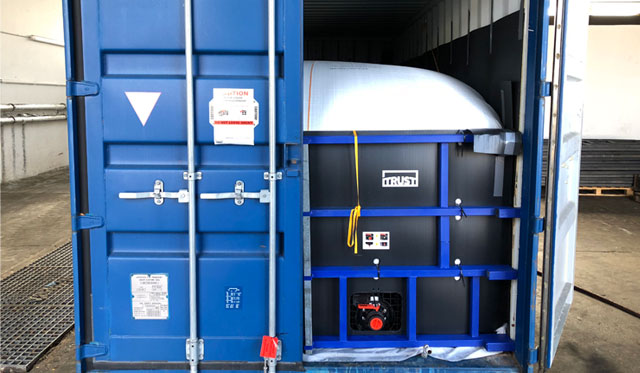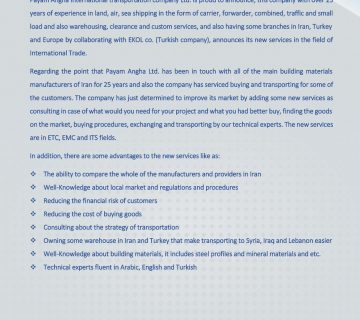What Is Flexitank
Flexitanks are a bulk liquid container made up of several layers of custom formulated blended polyethylene with an outer covering of woven polypropylene. Flexitanks help transport non-hazardous liquid using a standard 20-foot sea or railway container. Thus, flexitanks help convert a normal dry goods carrier into a liquid carrier very conveniently
In the shipping container business, people mainly focus on the type of merchandise which can be boxed and sorted on pallets. In fact, this is only a portion of what can be shipped in those magical boxes. Handling different types of products is an important segment of logistics, and we utilize different type of containers to achieve that.
Moreover, a container itself is not the only thing that we can utilize to handle our unordinary cargoes. We can use various types of packaging techniques to turn a dry van container into a liquid tank, too.
The Flexitank was developed by the U.S. military to store and transport water and diesel fuel in the 1960s. It is a bulk liquid storage unit, made of multiple layers of polyethylene, with an outer covering of woven polypropylene. As global commerce expanded, logisticians took advantage of this technology to transport any non-hazardous liquids by simply placing them in a standard dry container. It basically converts an ocean container to a healthier, safer and cost-effective alternative for shippers.
Flexitanks are widely preferred for food-grade products such as edible oil, fruit concentrates, beverages and non-hazardous chemical transportation due to their high efficiency along with superior protection against contamination.
A growing population has also increased the food demand in massive volumes, and this demand positively influenced the food grade and beverage trade across the globe, too.
As the major exporter of corn, soybean, oilseeds, and feeds, North America has been the largest player in the bulk container packaging market. However, this trend is shifting to the East now. Increasing edible oil exports from Southeast Asia will bring substantial growth to the industry in the region. Indonesia alone exported more than 14 million tons of palm oil in 2007 and reached roughly around 20 million tons in 2013. More than 30% of this trade was done through Flexitanks, owing to its high operational efficiency, and low cost.
Along with bulk container liners and flexible intermediate bulk containers, the market size is projected to hit $6 billion by 2024. As the demand increases, logistics service providers need to keep up with market trends and invest in new technologies to be a part of the new landscape of the shipping industry.
Benefits and Advantages of Using Flexitanks
Cost-effective – Flexitanks are cheaper to use as compared to drums, IBCs and tank containers. The cost of using flexitanks is one-third than what you would need to spend when transporting bulk liquid using traditional bulk liquid containers.
Carry more payload – Flexitanks can carry 15% more payload than what is carried by IBCs, 44% more than drums and 50% more than bottles, so they are economically more viable to use.
Keeps product quality intact – Flexitanks are composed of several layers and each layer comes with a pump and a valve making it airproof and waterproof. This helps to keep the quality of liquid intact.
Offer better protection against contamination – As flexitanks are designed for single-use the risk of contamination is reduced considerably.
Preferred for transporting food and pharma-grade liquid – As flexitanks offer superior protection against contamination, these are highly preferred for carrying food-grade bulk liquids such as edible oil, beverages, fruit concentrates and wine, besides pharmaceutical ingredients and non-hazardous chemicals.
Makes loading/unloading faster – It does not require the use of a forklift to load or unload container which makes loading and unloading faster and also cheaper as compared to the cost of using drums and IBCs. Also, the product loss for unloading is lower with flexitanks.
Requires less labor – As flexitanks are convenient to handle, load and unload, you would require less labor, which also means lower logistics cost.
No cleaning cost – As the bags are disposable, there is no cleaning cost when using flexitanks. You would not need to return the container this also helps to bring down the total cost of transportation.
No additional storage required – When using flexitanks no additional storage is required as flexitank is in itself a reliable storage unit.
Eco-friendly – Flexitanks are entirely recyclable so they are safer for the environment.




